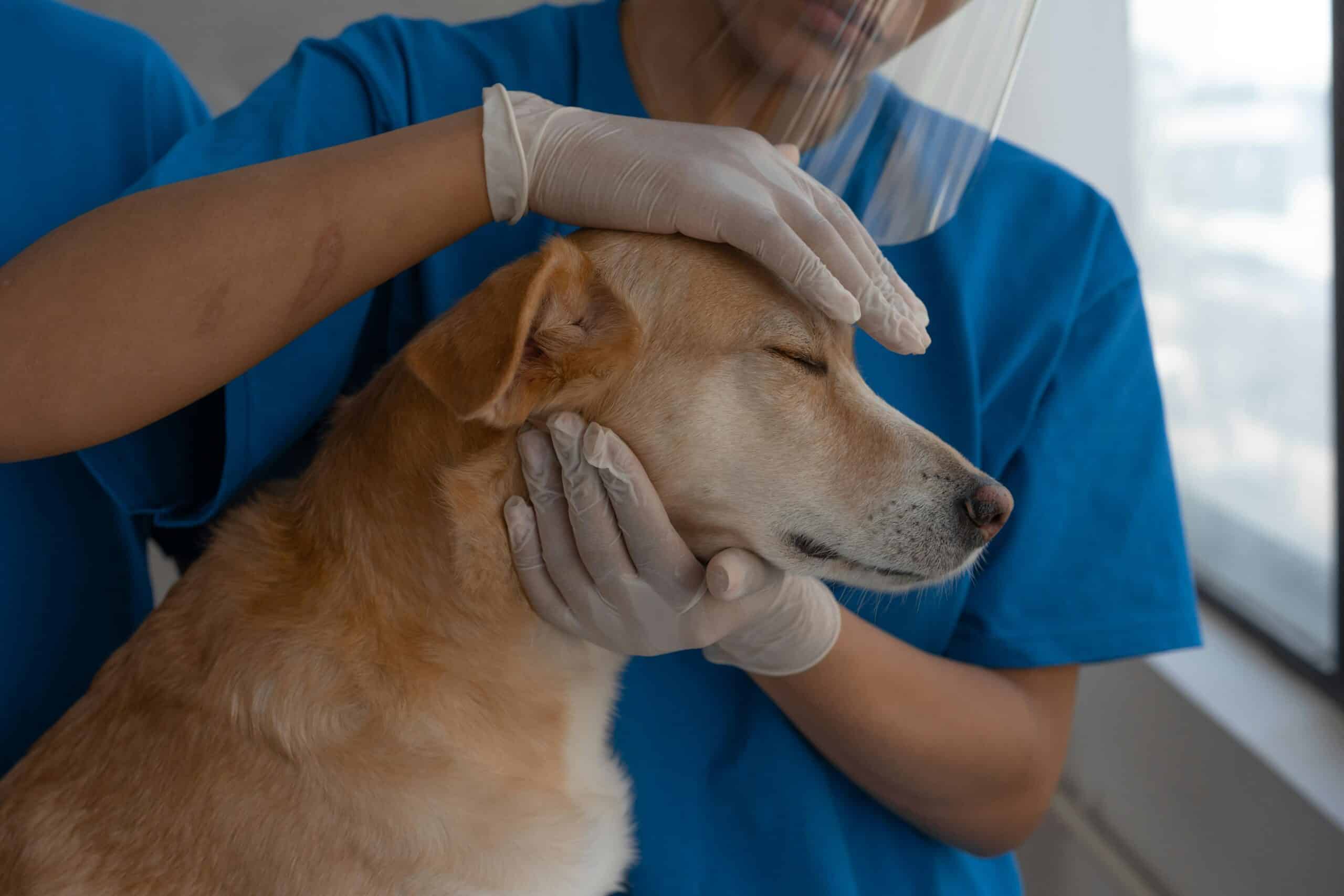Tips for Finding the Right Vet for Your Dog or Cat
Posted by Lora Shaw on August 12, 2025

Finding the Right Vet: Essential Key Takeaways to Know
- The right vet strengthens your pet’s lifelong care – Choosing carefully helps ensure your dog or cat receives consistent, trusted medical attention over time
- Quality care goes beyond credentials – A clinic’s approach, from communication style to how comfortable they make your pet feel, is just as important as qualifications
- Different pets have different needs – Cats may benefit from cat-friendly clinics, while dogs often require vets familiar with breed-specific concerns
- Practical details matter too – Location, hours, emergency options, services, and payment policies all play a role in finding a vet that’s a good fit for both you and your pet
Choosing the right veterinarian is an essential step in ensuring your pet’s health and well-being. Whether you have a puppy or kitten, or an adult dog or cat, finding a trusted vet who understands your pet’s unique needs can make all the difference.
This guide will help you navigate the process by highlighting key factors to consider, from seeking trusted recommendations and reviewing qualifications to understanding the importance of specialized care for cats and dogs.
Our Top Suggestions for Choosing the Right Vet
- Ask for recommendations – A good way to start your search is to ask for recommendations from trusted family members, friends, other pet owners, and beyond. They might have a trusted vet that they prefer and who they have had lots of experience with. Additionally, reputable breeders, trainers, or local shelters might have some recommendations to offer, as well, and they might even be able to suggest by the breed of animal that you have.
- Check qualifications and experience – There are likely vets out there who have experience treating your pet’s species and breed, so be sure to shop around. Also, if your dog or cat presents specific issues or health concerns, such as everything from allergies to arthritis, check to see if there is a veterinarian in your area who can address these.
- Review accreditations or professional memberships – Another aspect to check for is if a clinic has been recognized by the American Animal Hospital Association. For cat owners, you can also check for the American Association of Feline Practitioners. These accreditations show that a facility adheres to high standards of care.
- Read reviews – Online reviews provide a lot of insight into the experience of other pet owners in your area. People will shout out certain vets/members of the team and also write about issues or problems that occurred. With the help of reviews, you can see what to expect and how to approach your first visit with a veterinarian. Since you might not know the full situation of other patrons, we would advise prioritizing recommendations from other trusted parties first.
Cat-Owner Tips
Cat owners should prioritize finding a clinic that is truly cat-friendly. These organizations are often certified by AAFP and have staff members who are trained in feline behavior to ensure that your cat gets the best care possible. Also, if your cat is prone to anxiety, be sure to find a clinic that has a separate waiting room for their feline friends, as these rooms are often quieter and more relaxing than ones where dogs and cats are combined.
Lastly, it’s imperative to find a vet who explains cat health thoroughly, answers your questions, and approaches pet wellness with consummate care. With all of these items in mind, you should end up with a cat-centered checkup that is low stress and compassionate.
Dog-Owner Tips
Dog owners should seek out a veterinarian and clinic that demonstrates expertise and comfort in working with dogs of all breeds, sizes, and temperaments. It’s also important to choose a practice where staff members are knowledgeable about breed-specific medical conditions, common canine illnesses, and preventive care tailored to your dog’s age and lifestyle.
Look for clinics committed to creating a welcoming and low-stress environment for dogs, with features like separate waiting areas for dogs and cats, calm handling techniques, and team members who are comfortable with both energetic puppies and anxious or elderly dogs.
Considerations When Choosing a New Vet
- Hours of operation
- Location of the office and proximity to your house – this is not always a dealbreaker, though, as a good vet can be worth the drive
- Services they offer, like X-rays and medical tests
- Cleanliness and organization of the space
- How other patrons of the clinic respond to it – do they appear happy, and do their pets feel at ease?
- How comfortable your pet is around the vet
Questions to Ask Your Future Veterinarian
- How many veterinarians are in your practice? Can I request appointments with a specific one?
- Does your office provide emergency services? If not, can you suggest a clinic that offers care after hours?
- What services do you provide?
- Do you offer virtual appointments?
- Do you have a testing and procedural site?
- Where are you able to send prescriptions?
- Do you accept pet insurance?
- What do your payment policies look like?
- Is it possible to do a walk-in appointment?
FAQs About Veterinarian Care
Is it a problem to switch veterinarians?
If you’re unsatisfied with your current vet, it’s important that you get care elsewhere and start looking for a new vet. Whether the reason for switching is related to the service, cost, or something else, make sure you pick a new location where your pet will be well taken care of.
How will I know when it’s time to switch vets?
Here are some signs it’s time to move on from your current pet caretaker:
- They mistreat you or your pet
- Your pet has been misdiagnosed
- You feel your pet’s needs or circumstances aren’t being acknowledged fully
- The vet does not communicate problems or options for treatment
How often should I take my pet to the vet?
The frequency that you take your dog or cat to the vet depends on a variety of factors, like their age, health status, and species. For example, puppies and kittens should go to the vet once every 3–4 weeks until they are around 16 weeks old for vaccinations and general health checks. Once they are adults, they only need to be seen around once or twice a year. This is the perfect time to get in a comprehensive wellness exam, booster vaccines, and routine check-ups.
How can I tell that it’s time to take my pet to the vet?
Look for the following signs in your pet to determine whether it’s time to take them to the vet:
- Changes in eating or drinking habits
- Vomiting or diarrhea
- Unusual behavior or a lethargic nature
- Difficulty breathing or coughing/wheezing
- Changes in urination patterns
- Visible injuries, including limping, avoiding use of a limb, paralysis, wounds, or something else
- Skin or eye issues, like red or teary eyes, hair loss, or visible lumps
- Anything else abnormal
You know your furry friend best, so if you notice something unnatural or out of character for them, be sure to consider taking them to your vet.
Pet Palace Is Your Source for Premium Pet Care
Pet Palace is a premier pet boarding and grooming facility, and we’re pleased to see so many furry friends every day. On the rare occasions that a pet needs assistance while in our care, we always coordinate with your personal vet since they know your pet the best. We want owners to have full peace of mind that their furry friends are getting the best care possible from trusted professionals.
Contact us today to schedule an appointment at one of our facilities!

Categories: Cats, Dogs, Pet Safety, Tips for Your Pets
Archives
Recent Articles
Categories
Monthly Archive
- September 2025
- August 2025
- July 2025
- June 2025
- May 2025
- April 2025
- March 2025
- February 2025
- January 2025
- December 2024
- November 2024
- October 2024
- September 2024
- August 2024
- July 2024
- June 2024
- May 2024
- April 2024
- March 2024
- February 2024
- January 2024
- December 2023
- November 2023
- October 2023
- August 2023
- July 2023
- June 2023
- May 2023
- April 2023
- March 2023
- February 2023
- January 2023
- December 2022
- November 2022
- October 2022
- August 2022
- July 2022
- June 2022
- April 2022
- March 2022
- February 2022
- November 2021
- October 2021
- November 2020
- September 2020
- July 2020
- March 2020
- January 2020
- November 2019
- September 2019
- July 2019
- March 2019
- January 2019
- December 2018
- November 2018
- October 2018
- August 2018
- July 2018
- June 2018
- May 2018
- April 2018
- March 2018
- February 2018
- January 2018
- December 2017
- November 2017
- October 2017
- September 2017
- August 2017
- July 2017
- June 2017
- May 2017
- April 2017
- March 2017
- February 2017
- January 2017
- December 2016
- November 2016
- September 2016
- August 2016
- July 2016
- June 2016
- May 2016
- April 2016
- March 2016
- February 2016
- December 2015
- November 2015
- October 2015
- September 2015
- August 2015
- July 2015
- May 2015
- March 2015
- February 2015
- January 2015
- December 2014
- November 2014
- September 2014
- August 2014
- July 2014
- June 2014
- May 2014
- March 2014
- February 2014
- January 2014
- December 2013
- November 2013
- October 2013
- September 2013
- August 2013
- June 2013
- May 2013
- March 2013
